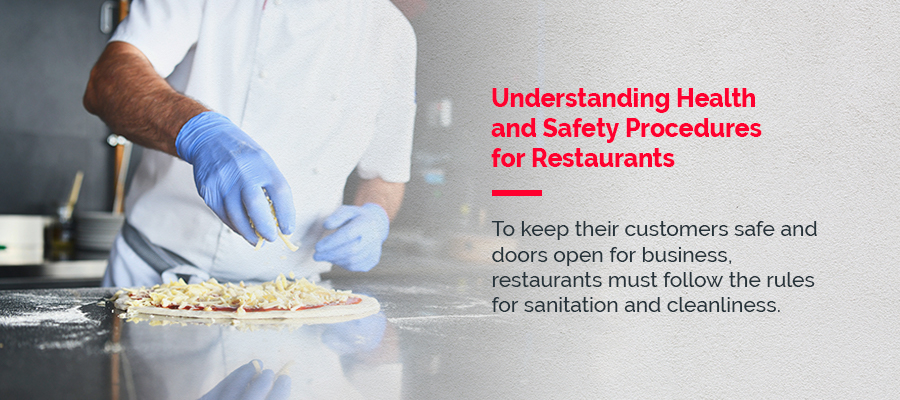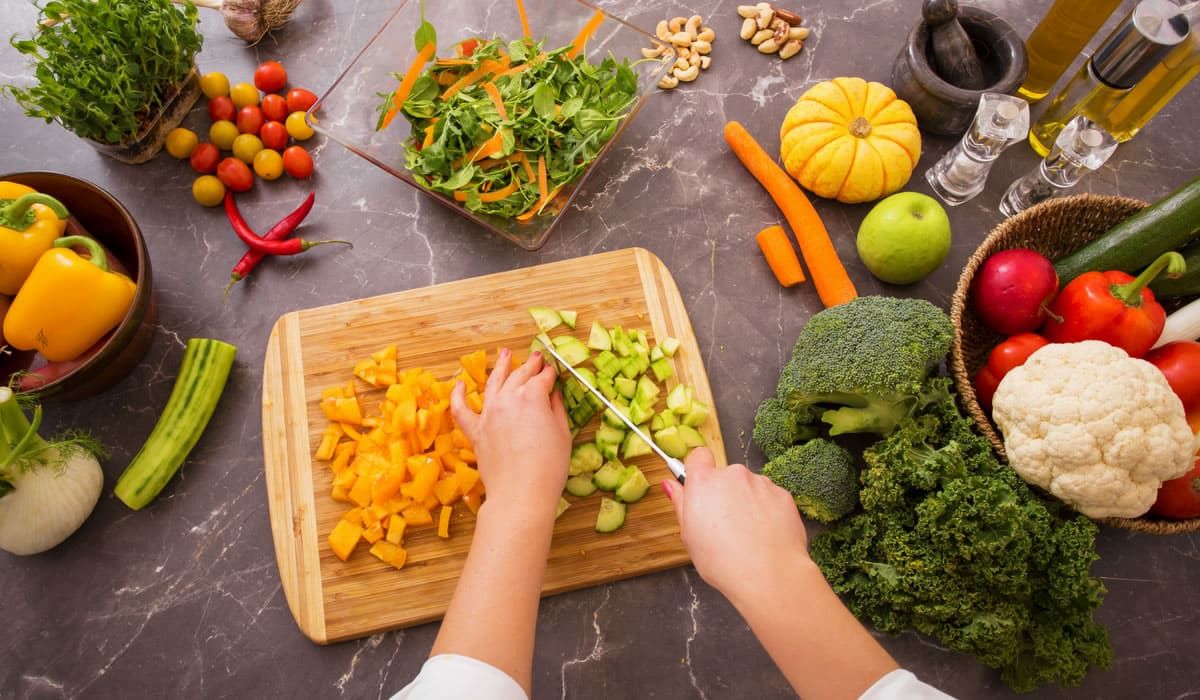To Ensure That the Sanitizing Solution for a Food Prep
To ensure that the sanitizing solution for a food prep surface will work correctly a food handler should use a test kit to check its concentration An emergency that disrupts the normal water supply may require the use of. The Code does not specify which procedures must be used to ensure the premises and equipment are kept in a clean and sanitary condition.

How Sanitizing Protects Your Food Safety
Unlike other sanitizers PAA sanitizers function well under cold conditions.

. Scrape or remove food from the equipment surface. Rinse it form the surface and then apply it a second time c. Kitchen preparation tables cutting boards utensils condiment containers typically left on.
PAA is an effective sanitizer that is active against many bacteria fungi and spores. The appropriate test kit must then be used to measure concentration. Rinse the equipment surfaces with clean water.
Wipe down all surfaces with a second clean cloth immersed in sanitizing solution 100 ppm chlorine or 28 mL bleach per 45 L water. Step 1 Preparation. Acetic aid and hydrogen peroxide.
Using regular strength bleach which is 525 to 6 sodium hypochlorite mix one teaspoon per quart of water or one tablespoon per gallon of water. What should you do to make sure that a sanitizing solution for a food prep surface will work correctly. An alcohol-based sanitizer would ensure germ and virus-free hands.
Dont wash meat poultry eggs or seafood to avoid spreading harmful germs around your kitchen. Use a test kit to test its concentration. LEANING Removes soiled surfaces to allow effective sanitizing or disinfecting.
Heat it to the temperature reccomended by the manufacture. Take removable parts off and wash rinse and sanitize by hand or in a dishwasher if allowed. Scrape away leftover food on the dishes and utensils.
Sanitation Prep Pre-Rinse Clean SanitizeRinse Inspect Remove Assemble Pre-Op Inspection Verification Sanitize Verify no standing water Measure concentration using test kits Flood sanitize entire processing area Walls floors and equipment Ensure equipment is running Apply from top to bottom Follow label directions for EPA-. Sanitize the equipment surfaces. Use a test kit to check its concentration.
Use a test kit to check its concentration b. Wash down all surfaces with a clean cloth immersed in clean warm water and detergent. Wash the equipment surfaces.
An easy homemade version is to make a solution of 1 tablespoon of liquid chlorine bleach per gallon of water or you can use a commercial sanitizer or sanitizing wipe. Disinfection is not approved for food contact surfaces. Allow the dishes and utensils to air-dry.
Environmental Protection Agency EPA. Sanitizers are used on cleaned surfaces to make certain that the surface is free of pathogenic microbes. After thoroughly cleaning spray or wipe using a microfiber cloth not a paper towel the surface with Vital Oxide to sanitize or disinfect.
Next rinse the area with a separate cloth. Step 2 Cleaning. Empty the bucket rinse the mop and hang the mop to dry.
Unwashed hands transfer germs causing foodborne illness and other infectious diseases. It is also advised that food should sanitize their hands at frequent intervals. A damp cloth should be used to remove any chemical residue.
To accurately test the strength of a sanitizing solution one must first determine which chemical is being usedchlorine iodine or quaternary ammonium. There are two types of PAA. Remove loose dirt and food particles.
Use a test kit to check its concentration. Dry produce with a paper towel or clean cloth towel. Produce labeled as pre-washed does not need to be washed again.
This is also one of the most effective food-safe sanitizers in removing biofilms. Rinse the dishes and utensils in the second sink with clear clean water. To ensure that the sanitizing solution for a food-preparation surface will work properly a food handler should.
Be sure to use hot water as this is better at loosening any remaining debris. Where should chemical sanitizers and chemicals be stored. Surfaces to sanitize.
Sanitize the dishes and utensils in a chemical solution or very hot water at least 171F in the third sink. Test the surface to confirm that no more pathogens are present d. In a separate area away from food and prep areas.
The labels instructions for preparation. Rinse it from the surface and then apply it a second time. To ensure that the sanitizing solution for a food prep surface will work correctly a food handler should.
To ensure that the sanitizing solution for a food prep surface will work correctly a food handler should a. Pre-clean the surface with soap and water. Scrub firm produce like melons or cucumbers with a clean produce brush.
The sanitizer solution should have a 30 second contact time prior to air drying. Clean and sanitize food preparation areas at the end of each shift. Lean before you sanitize.
For disinfecting Vital Oxide must always be applied full-strength. Ensure chemicals used in the kitchen are intended for. Hence hand washing should be a strict norm thats implemented and monitored.
It is important to make sure the bleach can be used in food applications and that it is unscented. Rinse with warm potable water. The water temperature in the wash sink of a three-compartment sink must be at least.
Pour or spray your sanitizing solution on surfaces and wipe them clean with a paper towel. Clean the dishes and utensils in the first sink with soap and warm water. Additionally periodically sanitize high touch surfaces while the kitchen is in use eg.
Chemical sanitizers are registered for use on food-contact surfaces through the US. Heat it to the temperature recommended by the manufacturer. For sanitizing food-contact surfaces Vital Oxide can be diluted 9 parts water to 1 part Vital Oxide.
Many different sanitizers can be used. Clean Kitchen Equipment and Surfaces. Food businesses may use a combination of procedures and methods to meet Codes requirements.
Allow to air dry prior to replacing food on shelves. Test the surface to confirm that no more microorganisms are present. In most state and federal food safety protocols a sanitizing step is required for food contact surfaces.
Allow the surfaces to air-dry. Since sanitizers are designed to leave anti-bacterial residue on food contact surfaces they arent allowed to be in contact with. This step will kill any remaining bacteria.
Sanitizing involves killing any.

Food Safety And Food Preparation In Small Spaces Johnston

Everything You Need To Know About Restaurant Sanitation San J
:max_bytes(150000):strip_icc()/__opt__aboutcom__coeus__resources__content_migration__serious_eats__seriouseats.com__2020__03__20200320-covid-food-prep-gloves-shutterstock-3d4aa015da574e1b937fa5c14b040e1e.jpg)

No comments for "To Ensure That the Sanitizing Solution for a Food Prep"
Post a Comment